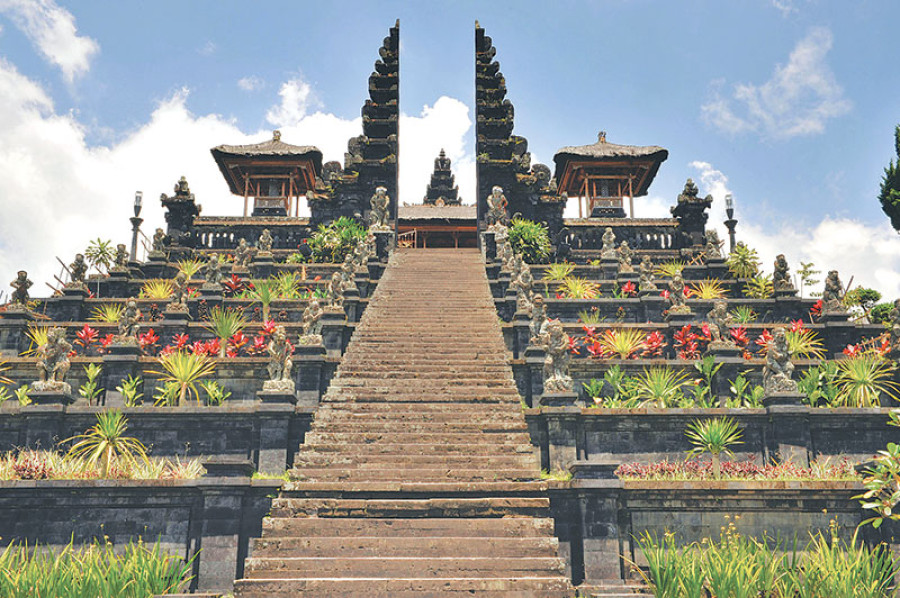Opinion
Island of gods?
It was thrilling to know that people other than South Asians also had an ancient claim over Hinduism
Pramod Mishra
I don’t recall having heard of Bali before reading Clifford Geertz’s essay “Deep Play: Notes on the Balinese Cockfight” in a collection of essays called The Interpretation of Cultures (1973) some quarter of a century ago in the first graduate school I attended in the United States. The essay moved me deeply with its insights about layers of meaning in any cultural text—an insight that helped me unravel literary and cultural texts. Not long after, I read Benedict Anderson’s even more influential book on nationalism called Imagined Communities (1983), which was also based on Anderson’s study of the construction of Indonesia as a nation state.
The fact that Indonesia had a population with a Muslim majority, while the island of Bali had a Hindu majority made me even more curious about Bali. And even as these bits of awareness and curiosity about the place were accumulating in my mind, I found myself living in graduate housing in Northern Illinois University in the early 1990s with two Indonesian graduate students. One, Andy Mallarangeng, originally from the island of Sulawesi but married to a Javanese woman, would eventually rise to be President Susilo Bambang Yudhyoyono’s spokesperson and later a minister in his cabinet after his return to Indonesia.
The other was from the island of Sumatra. From them I learnt not only that their language was called Bahasa Indonesia and their currency rupiah (all familiar terms), but that their proper names and language had extensive borrowings from Sanskrit. I knew little about how that happened and how Bali came to be a Hindu-majority island; the Balinese performed the Hindu epics Ramayana and the Mahabharata just like the Hindus did in rural north India and southern Nepal of my childhood and early youth. Along the way, in my desultory reading, I had gathered that Borobodur and Angkor Wat, the world famous Buddhist Hindu ruins/temples, were somewhere in South East Asia but my mental geography had failed to register exactly where.
Popular culture made Bali a place of gorgeous beaches and Western tourists’ hot vacation spot, constantly caught in the cross hairs of Islamic terrorists. When one reads serious literature like VS Naipaul’s two travel books, Among the Believers (1981) and Beyond Belief (1998), parts of which are based on Indonesia, one also reads about the rising intensity of Islamic fundamentalism in Indonesia. And a book like Eat, Pray, Love (2006) tells one how intriguing and mysterious spirituality still exists in Bali among all the worldly desires.
First-hand experience
So, when an opportunity presented itself this summer to visit Bali, where Nepali passport holders don’t need a visa for a 30-day visit, I jumped at it. A friendly travel agent even offered a package—all six days planned to the last details—but I decided to explore the place without this package. Bali, of course, turned out to be all that the travel brochures mentioned. It does have fine beaches that become surfers’ paradise with monstrous waves crashing onto the shores. The Balinese, at least those a tourist comes in contact with in the hospitality industry, are indeed unfailingly polite, solicitous and helpful. But nothing could beat the first-hand experience itself.
The thing that struck me most about Bali was its Hinduism. I had never met Hindus who were not of South Asian origin (if one doesn’t count the neo-Hindus, such as the European converts in the ISCON movement). So, to hear Balinese names like Dewa, or Surendra, or Krisna or Omang or Adi was disorienting and even pleasantly unsettling. I was also thrilled to know that people other than South Asians, too, had an ancient claim over Hinduism.
While a weeklong stay as a tourist was not at all enough to get to know the culture, I did form some impressions of Balinese culture. One finds temples everywhere in Bali, from small household ones to big ones, such as the Besakih temple, which we couldn’t visit, or the Batur temple in Kintamani, which we did. Religion has provided an inspiration, purpose and meaning, but tourism has given the incentive for Balinese art and craft. I don’t know about the villages that lie outside the tourist haunts, but everywhere else Bali seems to be one large art and craft museum of wood, fabric and metal work. Its various dance performances appear to be a combination of local folk as well as classical Indian dance forms, and the performers with bright coloured dresses and shining golden tiaras appear as the goddesses from the all night performances of epics in my village childhood in the Nepali plains.
Preparation for longer visits
But most striking are the ubiquitous presence of gigantic statues of characters from Hindu epics, such as the Ramayana and the Mahabharata in public places, such as crossroads and shopping malls. Thus, we saw Arjuna from the epic Mahabharata standing tall with his bow and arrow, looking over the traffic. And Rama and his monkey army from the epic Ramayana at a major crossroads calmly blessing the traffic. I saw neither traffic police nor street lights regulating the traffic—the drivers ever so patiently and in good humour guiding their vehicles with an implicit but quick understanding about who should yield for whom at crossroads, bringing the vehicles so close but never colliding.
Besides the ubiquitous offerings of leaf cups, bowls and plates on door fronts, pathways and elsewhere, the epic narratives and characters of the Ramayana and the Mahabharata dominate Balinese public life and public places. Although I didn’t have time to dig into the sensitive subject of the caste system, from the looks of it, I got the sense that it’s the narratives from the scriptures rather than the pervasive ritual of purity and pollution or abstract spirituality that dominate Balinese life.
My time in Bali was too short for any deeper exploration. For example, one can’t do justice to the art and craft town of Ubud by spending just a few hours there. One needs to spend at least a couple of days exploring the scene and visiting the numerous stores and studios to at least get a feel of the place. Similarly, one needs to spend time with the punditas (the priests) and the educated to know the complexities of the culture that is not available to a tourist's shifting gaze and clicking cell phone camera. But a short visit can always be a preparation for longer visits in the future.




 13.12°C Kathmandu
13.12°C Kathmandu


.jpg&w=200&height=120)







